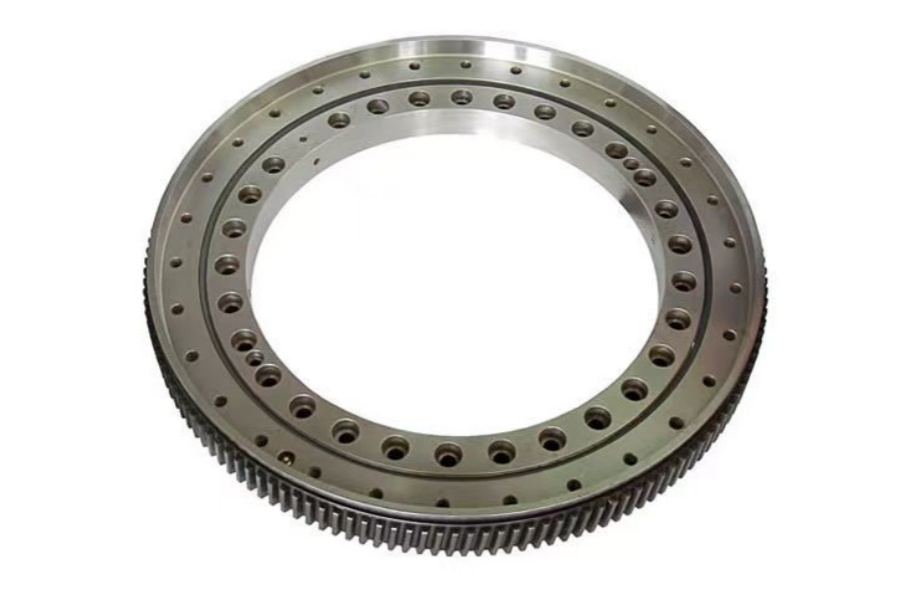Lubrication Best Practices for Slewing Bearings: Maximizing Performance and Service Life
Introduction: Why Is Lubrication Critical for Slewing Bearings?
Slewing bearings are essential components in heavy-duty machinery such as cranes, excavators, wind turbines, and industrial robots. Designed to handle axial, radial, and moment loads simultaneously, these bearings experience substantial stress and wear during operation. Proper lubrication is not just a maintenance task—it is a critical factor that affects bearing performance, reliability, energy efficiency, and service life.
This article outlines best practices for slewing bearing lubrication, including grease selection, lubrication intervals, application methods, and key considerations related to supplier quality, manufacturer guidelines, and pricing. It also highlights how LDB Bearing delivers optimized lubrication solutions for various industries.

Understanding the Function of Lubrication in Slewing Bearings
Lubrication serves several vital functions:
Reduces Friction: Ensures smooth movement of rolling elements
Minimizes Wear: Protects raceways and gears from metal-to-metal contact
Prevents Corrosion: Forms a protective barrier against moisture and contaminants
Dissipates Heat: Reduces operating temperature and thermal deformation
Without sufficient lubrication, slewing bearings are prone to premature wear, pitting, and eventual failure.
Choosing the Right Lubricant: Grease Types and Properties
Grease Base Types
Lithium-Based Grease: Common and cost-effective; suitable for general applications
Calcium-Based Grease: Offers better water resistance but lower temperature range
Polyurea-Based Grease: Excellent high-temperature stability; used in wind turbines and offshore equipment
Key Properties to Consider
Viscosity: Determines film strength and operating temperature range
Dropping Point: Should be 30–50°C above maximum operating temperature
Corrosion Inhibitors: Protect metal surfaces in high-moisture or salty environments
Special Additives
Molybdenum disulfide (MoS2) is often used to enhance load-carrying capacity and anti-wear performance.
Lubrication Intervals and Quantity Guidelines
Proper relubrication intervals depend on multiple factors:
Operating Hours
Rotation Frequency
Environment (dust, water, chemicals)
Bearing Diameter and Load
Typical Interval Ranges:
Light-duty indoor use: every 500 hours
Heavy-duty outdoor use: every 100–250 hours
Wind turbines: every 6 months or per OEM specs
Quantity Estimation Formula: Where:
Q = grease quantity (grams)
D = bearing diameter (mm)
B = bearing width (mm)
Always consult the manufacturer’s technical datasheet or maintenance manual for application-specific values.
Lubrication Application Methods
Manual Grease Gun
Cost-effective, simple, and ideal for small systems
Centralized Lubrication System
Suitable for large machinery and continuous operation
Reduces downtime and ensures even distribution
Automatic Lubricators
Used in remote or hazardous environments
Reduces human error and ensures consistent greasing
Common Lubrication Mistakes to Avoid
Over-lubrication: Can cause seal damage and overheating
Under-lubrication: Increases metal contact and accelerates wear
Using Incorrect Grease Type: May lead to compatibility issues or performance loss
Mixing Grease Brands: Can cause chemical degradation
Supplier and Manufacturer Guidelines
When selecting a lubricant, always ensure it meets the bearing manufacturer’s specifications. Working with a reliable supplier that provides grease compatibility data and technical support is essential.
Price Considerations
High-performance grease may cost more upfront but reduces long-term maintenance and replacement costs
Bulk purchase from certified suppliers offers cost efficiency
LDB Bearing’s Lubrication Strategy and Solutions
LDB Bearing not only supplies slewing bearings but also offers tailored lubrication plans for various applications.
Features of LDB’s Lubrication Solutions:
Pre-filled Bearings: Ready-to-install bearings pre-lubricated with application-specific grease
Lubrication Channels: Integrated designs that support automated or manual relubrication
Sealing Technology: Advanced seals prevent contamination and retain grease longer
Consultation Services: Assistance with lubricant selection and interval planning
Industries Served:
Construction equipment
Offshore and marine platforms
Renewable energy (solar and wind)
Mining and bulk handling systems
Conclusion
Effective lubrication is the cornerstone of slewing bearing performance. Choosing the right lubricant, applying it properly, and following the correct maintenance schedule can drastically increase bearing life and reduce operational costs.
With its engineering expertise and customizable solutions, LDB Bearing stands out as a trusted manufacturer and supplier of slewing bearings and lubrication systems. Whether you’re seeking a complete solution or just expert advice, LDB can support your operational goals.
Visit www.ldb-bearing.com to learn more or request a product recommendation.



